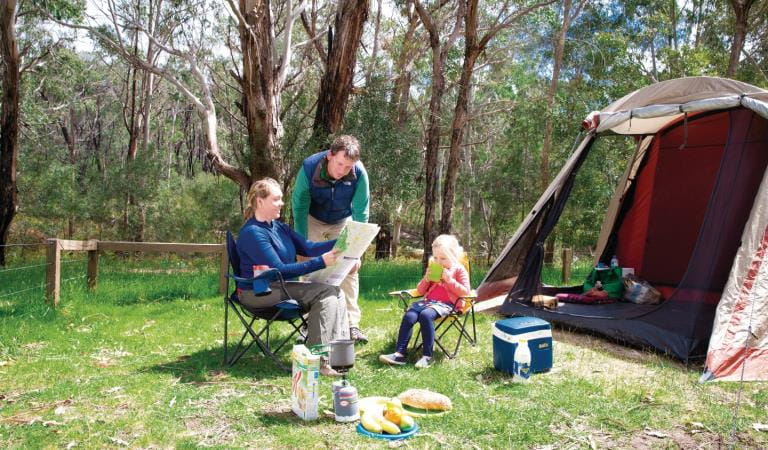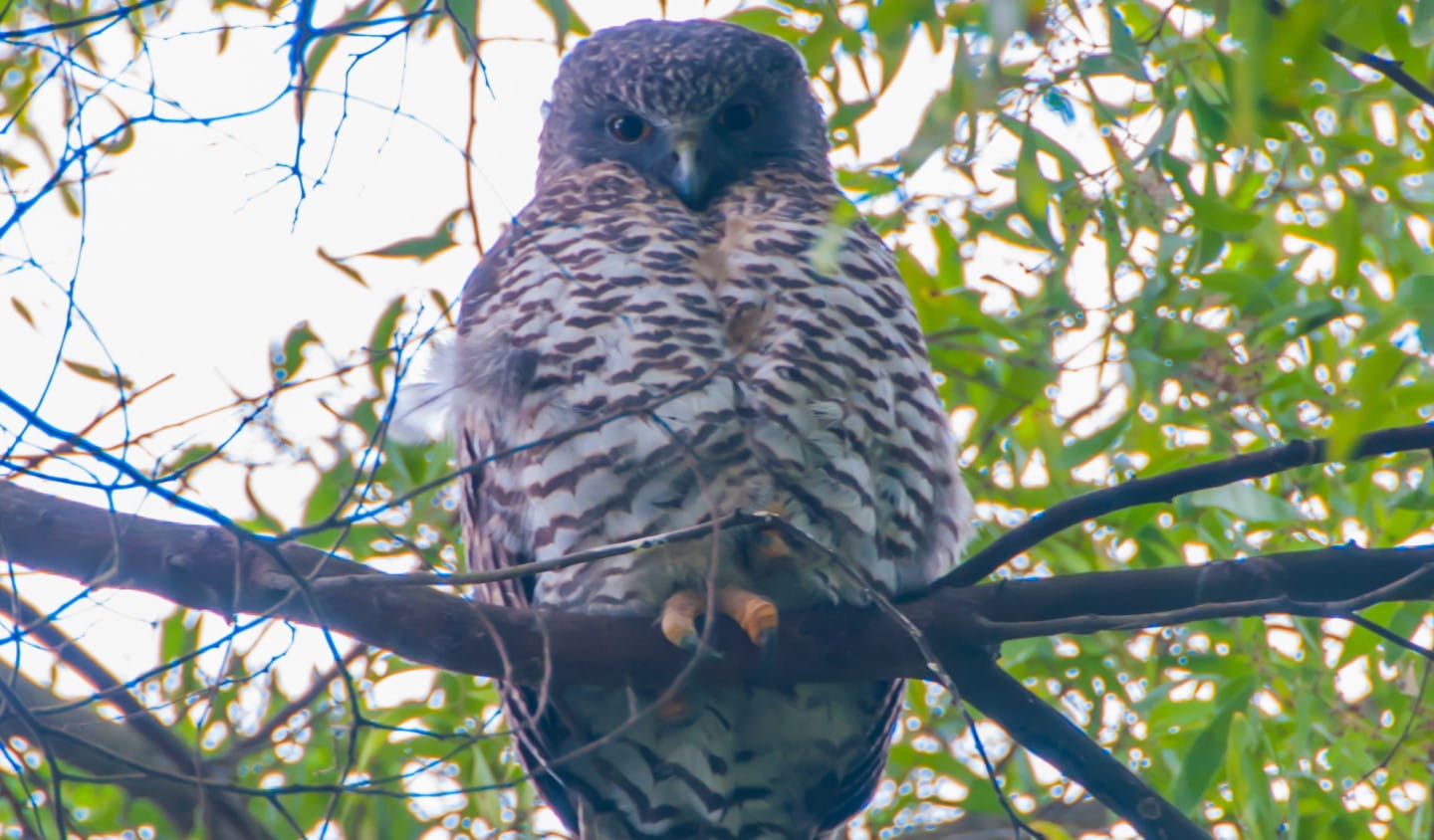Closer to Nature, Episode 3: People in Nature, Boosting Wellbeing
Wednesday 21 August, 2024
Overview
- In the third episode of Closer to Nature, Parks Victoria’s new podcast, we speak to Dr Kelly de Bie, Manager of Evaluation Information and Social Sciences, about what the data tells us about how people use our parks – the good and the bad.
- We also get out in the field to speak to some inspiring volunteers from the Friends of Canadian Corridor, a group dedicated to improving and protecting Woowookarung Regional Park, near the city of Ballarat in the central highlands of Victoria.
- Closer to Nature is a new podcast by Parks Victoria, about how the climate crisis is unfolding across Victoria.
Subscribe to Closer to Nature wherever you get your podcasts.
Analysing visitor behaviour in parks
Dr Kelly de Bie is Parks Victoria’s Manager of Evaluation Information and Social Sciences. Her team pours over detailed data sets on the daily, looking at ways to improve the management of the many parks and reserves across our state.

Photo: Dr Kelly de Bie, Manager of Evaluation Information and Social Sciences at Parks Victoria, analyses datasets to help inform how park management can be improved.
“We know from our data that about 95 percent of Victorians support active conservation in our parks, so that's a really encouraging statistic, and that has been consistent over the last five years so that we feel like that's a fairly solid trend.”
“We have a team that focuses on social science, a team that focuses on geospatial science, which is our spatial and mapping data, and then a team that focuses on park evaluation, so really (it’s about) understanding how our management is influencing conditions of the values that we care about on the ground.”
However, despite the good intentions of the overwhelming majority of Victoria’s, there are still risky behaviours that some visitors often undertake without realising the consequences that can seriously hamper conservation efforts.
“In a well-managed park system you can try your best to minimise visitation impacts. However, it also relies on positive visitor behaviours, which is something that you need to foster within a community.”
The question of how people should appropriately visit parks without damaging them is one of the many issues Kelly and her team look into.
What activities are people doing when they visit a park?

Hiking

Camping

Mountain biking
“So obviously, particularly for our national parks, if people are trying to come they predominantly drive, which means we need increased car parking, which can have a significant impact. And then once people arrive, we need to ensure that people are staying on the paths and tracks that are provided to people.
“Trampling can be a really significant issue in our parks for a number of reasons. Some things like orchids can be quite small and cryptic threatened plants. You might not know that it's there, but you might be stepping on it.”
“Rubbish is a big one for parks, and also the ‘take only photographs, leave only footprints concept’, to ensure that people aren't removing any important plants or animals from the park.”
Finding ways to discourage visitors from feeding native wildlife is another behaviour Parks Victoria would like to see stopped as it can cause harm to the animals in the long run.

A family of Black Swans at Albert Park
Swans and their baby cygnets may look sweet and innocent, but beware as they can quickly become aggressive if people get too close. Parks Victoria strongly advises against feeding wildlife, for their sake and yours!

Looking down over Albert Park
Albert Park, located just outside Melbourne's CBD, is one of the most popular urban parks in the city.
“Local staff were identifying that visitors at Albert Park were feeding the swans and that this was having some ongoing negative impacts on the swans’ behaviour and physiology.”
“They get a condition called Angel Wing, where their nutrient balance is thrown out, and at Albert Park, the other issue, not just on the swans’ health but also on their behaviour, was that they were then becoming a nuisance and there can be safety concerns then with small children and other things, so the behaviour is problematic both for the swan and for the visitors.”
Part of why Parks Victoria devotes time and effort tackling bad behaviours like leaving rubbish, feeding wildlife and walking off trail is because of the belief that if we look after nature, it will look after us.
“Healthy Parks, Healthy People is a well-known catchphrase that you hear a lot of. Spending time in nature has significant physical, mental and social health benefits.”
“There's great evidence that shows that visiting a park really helps reduce levels of anxiety and depression, and increases life satisfaction more broadly. Parks also facilitate social benefits by giving an opportunity to be out in nature with other people, even if you're visiting by yourself because it gives you an opportunity to be with people doing a similar thing.”
Giving back to nature
One of the best ways to experience nature and enjoy the social benefits it brings is through volunteering.
Parks Victoria is blessed to have thousands of dedicated volunteers spread across the state who spend their free time improving their local park or reserve for the benefit of not just other people, but for the native plants and animals who call it home as well.

Photo: Volunteer groups, like the Friends of Canadian Corridor, can be found right across Victoria, and are made up of like-minded individuals who want to give back to nature.
Jeff Rootes, Jo Kelly and Joel Ellis are all committee members of the Friends of Canadian Corridor (FOCC), a group dedicated to helping conserve and promote Woowookarung Regional Park, right on the edge of Ballarat in central Victoria.
“It does consume quite a lot of time, but then it's a really enjoyable process. It's something you do willingly. I don't see it as work,” Jeff says.
“We're very actively involved in tree planting and revegetation I think we've proudly planted two and a half thousand trees, and the community really gets on board behind us,” Joel says.
“I thought, well, if I can support in some way, then that might do some good both now and into the future,” Jo says.

Photo: Jeff Rootes, secretary of the Friends of Canadian Corridor, at The Lookout in Woowookarung Regional Park.
Jeff is the secretary of the Friends group and has been involved since its inception.
“The friends actually have a sort of a mantra of advocate, educate and activate. And if you take those three sort of pillars, that actually determines what sort of activities we do.”
For example, the group advocates on behalf of the park to the local council and state government, it educates and engages the wider public about the park, and it activates it through planting, weeding and visitation programs.
But the group is already thinking ahead as to how a changing climate may impact on future planting programs for Woowookarung.
“At some stage in the future, some of our trees may need to actually have provenance that comes from a little further north, a little drier, a little warmer. We’re not seeing stress in our trees in the area at the moment, but probably some of the susceptible varieties such as manna gums, Yarra gums, and swamp gums in the wetter areas, are the ones we will look at into the future as to how we actually deal with those, because they're the ones that will probably be most under threat to start with.”
Not only does the Friends of Canadian Corridor carry out regular planting and weeding events to revegetate Woowookarung, but the volunteers also conduct two dedicated citizen science programs recording sightings of Koalas and Powerful Owls.
“My main role with FOCC is to record the koala sightings and ensure that they go up onto the Victorian Biodiversity Atlas and to iNaturalist,” Jo says.

One of Ballarat's resident koalas
While being interviewed for this episode of Closer to Nature, Jeff was alerted to a sighting of this particular koala by a fellow volunteer, just a short distance from where we were recording in Woowookarung Regional Park.

Koala enthusiast and volunteer, Jo Kelly
Jo Kelly is passionate about providing more habitat for the region's koalas, and logs all sightings on citizen science databases.
Almost as if on cue, Jeff receives a text on his phone from another FOCC member that a koala has been spotted close by to where we’re recording at the lookout in Woowookarung Regional Park. When we track it down, a group of local high school students are equally as enthralled watching the fluffball high up in the tree.
But as exciting as koala sightings are, it’s another animal that gets Joel excited.
“I’m the resident bird nerd here. I remember the first time I saw a Powerful Owl, nearby here actually, and that was a great thrill. Those moments stay with you because it's not every day that you see something as a wonderful, fascinating species for the first time,” Joel said.
Joel now maintains a Powerful Owl sighting distribution map for the local area.

Joel Ellis being interviewed for Closer to Nature
Joel Ellis is the Friends of Canadian Corridor's "resident bird nerd" and maintains a Powerful Owl sightings map.

The mighty Powerful Owl
Powerful Owls are the largest species of owl in Australia, and are currently listed as Vulnerable in Victoria.
“It's very rewarding just to know that you're making a positive difference and inspiring a passion in people and getting fauna and the environment on the conscious of the community. That kind of motivates them to take an interest in the environment and to do their bit to improve the local environment as a collective local community,” Joel says.
“It's very humbling and a reminder of there's much more to life than the human experience.”
Links
- Albert Park
- Safety in nature
- Visitor safety tips in parks
- Woowookarung Regional Park
- Volunteering
- Healthy Parks Healthy People
To stay up to date with the latest conservation news and updates, subscribe to Conservation and Science eNews with Chief Scientist Dr Mark Norman.





